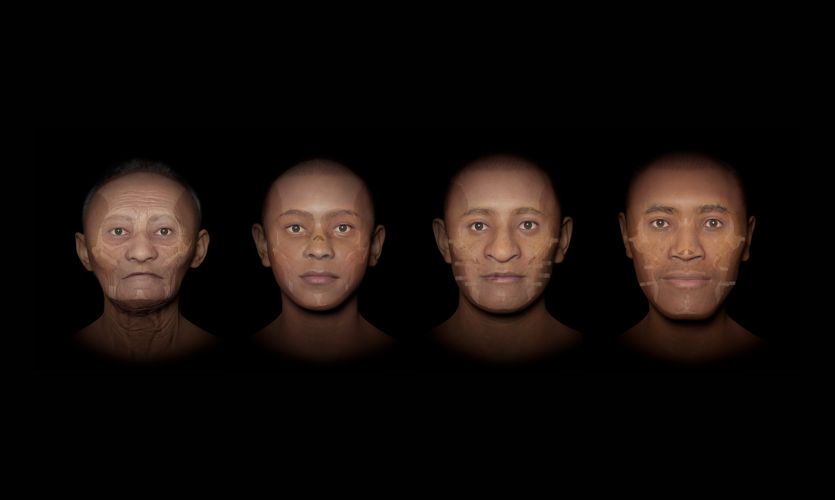Faces of Four Mummified Andean People Reconstructed
- archaeology.org language
- 2025-10-03 01:00 event
- 23 hours ago schedule


Domain FALEARN.com for sale! This premium domain is available now at Kadomain.com

The German-Soviet War, known in the USSR and today's Russia as the Great Patriotic War or, in Western Europe, as the Eastern Front of the Second World War (1939-45), began in June 1941 with Operation
Chloe Ahmanns Futures After Progress offers a delightful journey into South Baltimores environment and ecology. South Baltimore, due to frequent factory fires, chemical explosions, and aerial pollutan
The Underground Railroad was a decentralized network of White abolitionists, free Blacks, former slaves, Mexicans, Native Americans, and others opposing slavery in the United States who established se
The Battle of Smolensk in August to September 1943 was the second time the Soviet Union and the Third Reich fought over the city on the Dnieper during the Second World War (1939-45). By the summer of
Christopher Marlowe (1564-1593), also known as Kit Marlowe, was one of the most influential dramatists of Elizabethan theatre. Though he is best known for his plays, his poems were very popular in the
The Battle of Kursk (Jul-Aug 1943), which involved nearly 6,000 tanks, was the largest tank battle in history and ended in a decisive victory for the Red Army in WWII (1939-45). Two Axis armies had at
On 5 May 1593, a series of anti-Protestant bills were posted throughout the city of London. One of the bills was written in iambic pentameter and included several references to the works of celebrated
The assassination of Archduke Franz Ferdinand (1863-1914) in the Balkans in the summer of 1914 set off a chain of events that led to the First World War (1914-18). For over a decade before, imperialistic governments, a fierce arms race, rising nationalism, and the obligations of a complex web of international alliances created an atmosphere that war was very much in the air. When Franz Ferdinand...
Extraordinary treasures unearthed from a 3rd century B.C. tumulus in Mangalia, southeastern Romania, were revealed to the public for the first time last month at the National Museum of Romanian History in Bucharest. The finds include jewelry, gold and silver harness fittings, textile appliques and two gold and two silver vessels of delicate and refined … Read the full post →"Treasures found in largest Hellenistic tumulus in Romania"
LIVERPOOL, ENGLAND—Live Science reports that researchers from the Face Lab at Liverpool John Moores University […] The post Faces of Four Mummified Andean People Reconstructed appeared first on Archaeology Magazine. News, Andes, Colombia, facial reconstruction, Mummification
GUILAN, IRAN—Phys.org reports that Mohammad Reza Eghdami of the University of Guilan and his colleagues […] The post 2,000-Year-Old Remains of Wounded Man Examined in Iran appeared first on Archaeology Magazine. News, injury, Iran, Parthian, warfare
ÇANAKKALE, TURKEY—A gold brooch, a rare piece of jade, and a bronze pin dated to […] The post Rare Objects Unearthed in Ancient Troy appeared first on Archaeology Magazine. News, brooch, Hisarlik, jade, Troy, Turkey
Chogha Zanbil (literally "basket mound") is an ancient Elamite temple complex located in the modern-day province of Khuzestan, Iran. It is also known as Dur-Untash (Fortress/City/Town of Untash), Tchogha Zanbil, and Al Untash Napirisha ("Place of Untash Napirisha") and features the largest ziggurat in the world outside of Mesopotamia and the best preserved. It was built circa 1250 BCE during...
Elam, located in the region of the modern-day provinces of Ilam and Khuzestan in Iran, was one of the most impressive civilizations of the ancient world. It was never a cohesive ethnic kingdom or polity but rather a federation of different tribes governed at various times by cities such as Susa, Anshan, and Shimashki until it was united during the Middle Elamite Period, briefly, as an empire...
Noah’s Ark and the Slave Trade JamesHoare Thu, 10/02/2025 - 08:00
A new study (pdf) by Lund University researchers of the weapons found on the wreck of the 15th century Danish royal flagship Gribshunden has cast new light on the development of naval artillery in the Age of Discovery, and how the armed ships were used in battle. Part of 11 cannons and their oak gun … Read the full post →"Gribshunden’s artillery explained"
AARHUS, DENMARK—Researchers have discovered the earliest known traces of blue pigment on a 13,000-year-old stone […] The post Earliest Use of Blue Pigment in Europe Identified appeared first on Archaeology Magazine. News, azurite, blue, Germany, Paleolithic, pigment
EILEAN DONAN, SCOTLAND—The iconic Eilean Donan Castle is one of the most picturesque spots in […] The post Medieval Hair Styling Tool Recovered at Scottish Castle appeared first on Archaeology Magazine. News, castle, Eilean Donan, gravoir, hair styling, medieval, Scotland
NEFUD DESERT, SAUDI ARABIA—Researchers were recently surprised when they encountered more than 60 ancient rock […] The post Animal Rock Art Likely Marked Arabian Desert Water Sources appeared first on Archaeology Magazine. News, animals, camels, desert, Nefud Desert, rock art, Saudi Arabia, water